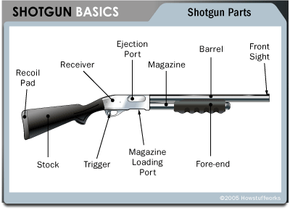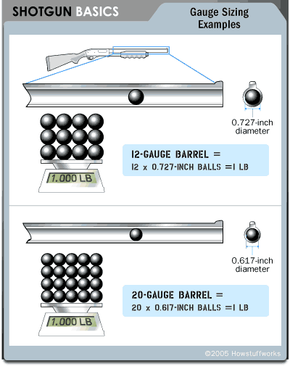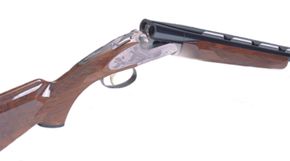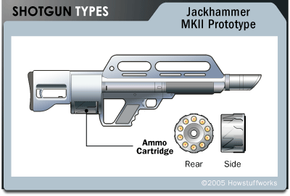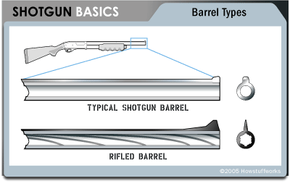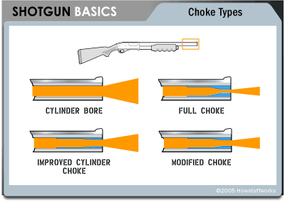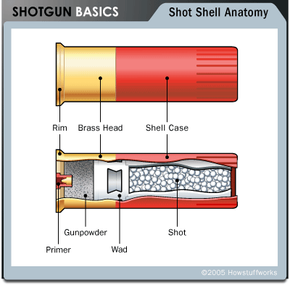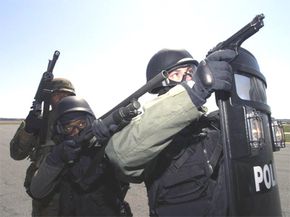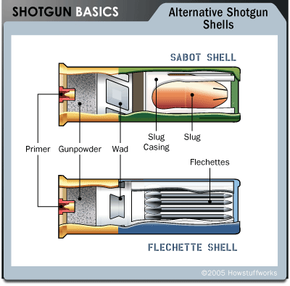Shotguns first came into use in the early 1600s. The first two-barrel shotgun appeared in 1873, and the first modern, hammerless, pump-action shotgun was produced in 1904. By the turn of the century, they were immensely popular. Many military officers loved their personal shotguns so much that they brought them along instead of sidearms to World War I, earning them the nickname "trench guns." Since then, they have become a permanent part of the military arsenal and a part of the everyday lives of many civilians as well.
Why a shotgun instead of, say, a rifle? Well, to do its job, a projectile must:
Advertisement
- make contact with the target
- hit the target in a critical spot
With a wider stream of potentially deadly projectiles, a shotgun is like using a can of spray paint if a rifle is like using a felt-tip pen. As long as the target is within its effective range, a shotgun will give you a much better chance of making critical contact with one pull of the trigger.
The shotgun is the Swiss-army knife of guns. It is an indispensable tool -- on the farm, in combat and on the hunt. They are just as useful in non-lethal situations, like for scaring away pests or for opening locked doors in a police or military situation, as they are for big game hunting. In this article, you'll find out how shotguns work, what different types are out there and about the various types of ammo a shotgun can accommodate.

